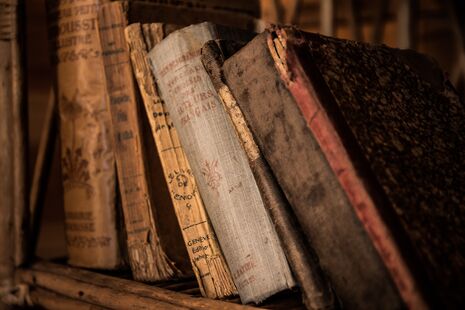From Woolf to Wordsworth
Discover the literature in Cambridge, and Cambridge in literature

Cambridge has been home to hundreds of famous writers over the history of the university, its image immortalised by their works just as their works are immortalised in the city. Given the wealth of literature published both in Cambridge and by those who have been to Cambridge – from William Wordsworth to Virginia Woolf, John Milton to Sylvia Plath – it’s not surprising that across the city there are a number of sites with literary and historical significance.
Since 2008 a carved stone placed behind the bridge in King’s College has shown the first and last lines of a famous Chinese poem by Xu Zhimo, called ‘Farewell to Cambridge’. Xu was a literature researcher at King’s from 1921-22, where he fell in love with English Romantic poetry and the French symbolist poets, whose works he translated into Chinese. He wrote his ‘Farewell to Cambridge’ in 1928 after coming back to the city on a tour, and would tragically die in an airplane crash just three years later. The lines of this poem on the stone, the first and last two of the poem, translate roughly as: “Quietly now I am leaving, / Just as quietly as I came. […] Softly I wave my sleeve, / I am not taking a single cloud”.
Grantchester isn’t just the idyllic setting of a gritty TV detective drama; it is also a countryside village just outside Cambridge that has hosted a number of famous names in years gone by. Its Orchard Tea Garden was once frequented by literary greats such as Rupert Brooke, E.M. Forster and Virginia Woolf, while the tearoom itself used to be the home of the poet Lord Byron. Brooke’s poem, ‘The Old Vicarage, Grantchester’, preserves the memory ofthe establishment and the village: “But Grantchester! ah, Grantchester! / There’s peace and holy quiet there, / Great clouds along pacific skies, / And men and women with straight eyes, / Lithe children lovelier than a dream”. Today, it’s a pretty spot to socialise on a sunny afternoon, and the Rupert Brooke Museum nearby reminds us of its esteemed patrons who have visited the place since its opening in 1897.
The Eagle pub is known primarily for being the location of the announcement of the discovery of DNA by Crick and Watson in 1953; however, it has literary significance too. The historic cultural hub is thought to have played host to numerous performances of Shakespeare plays – performances Shakespeare is said to have attended himself.
It is sometimes more interesting, though, to see Cambridge appear in the writing of these artists. Woolf often mentioned it in her works; in Jacob’s Room she writes: “They say the sky is the same everywhere. [...] But above Cambridge – anyhow above the roof of King’s College Chapel – there is a difference. Out at sea a great city will cast a brightness into the night.
Is it fanciful to suppose the sky, washed into the crevices of King’s College Chapel, lighter, thinner, more sparkling than the sky elsewhere? Does Cambridge burn not only into the night, but into the day?” She would go on to detail her social activities in Grantchester in her diaries, and it is clear from her work that Cambridge and its neighbouring village held a dear place in her heart.
In fact, many of the college libraries across the university contain rare manuscripts from revered alumni - artists whose works are available in the numerous bookshops around the city. The University Library contains most: whilst not a picturesque building, it holds over eight million books and manuscripts, most of which are free to examine by anyone.
With over 100 libraries, Cambridge is truly a literature hub, and students of the university have wonderful access to a myriad of pieces of literary history, both in the libraries and beyond.
 News / Eight Cambridge researchers awarded €17m in ERC research grants27 December 2025
News / Eight Cambridge researchers awarded €17m in ERC research grants27 December 2025 News / News in Brief: carols, card games, and canine calamities28 December 2025
News / News in Brief: carols, card games, and canine calamities28 December 2025 News / Caius mourns its tree-mendous loss23 December 2025
News / Caius mourns its tree-mendous loss23 December 2025 News / Clare Hall spent over £500k opposing busway 24 December 2025
News / Clare Hall spent over £500k opposing busway 24 December 2025 Interviews / Meet Juan Michel, Cambridge’s multilingual musician29 December 2025
Interviews / Meet Juan Michel, Cambridge’s multilingual musician29 December 2025








